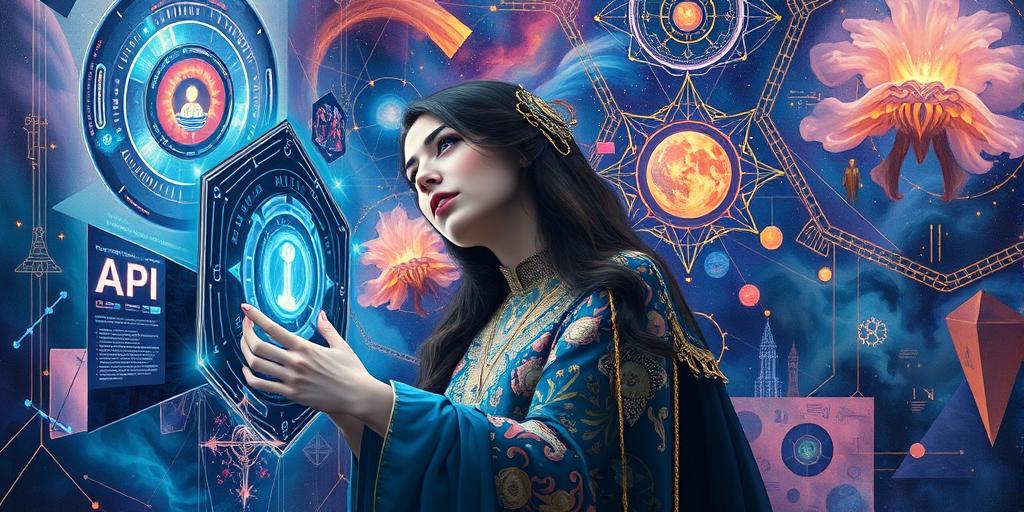Have you ever wondered what happens when artificial intelligence (AI) unleashes its creative potential? Prepare to be amazed! The intersection of artificial intelligence and creativity is no longer a futuristic fantasy; it’s a rapidly evolving reality, sparking both excitement and debate. From generating breathtaking art to composing emotionally resonant music, AI is challenging our understanding of creativity itself and raising profound questions about the nature of human ingenuity. Let’s dive into this fascinating world and explore the transformative power of AI in the creative realm.
The Dawn of AI Creativity: From Algorithms to Artistic Expression
The rise of AI in creative fields is a relatively recent phenomenon, but its impact is already undeniable. Early attempts focused on replicating existing styles, but modern AI models like DALL-E 2 and Midjourney are capable of generating truly original and novel creations. These advancements are powered by sophisticated algorithms that can analyze vast datasets of images, text, and music, learning patterns and structures that inform their creative output. This process, often described as “machine learning,” allows AI to go beyond simple imitation and create something entirely new. The results are sometimes breathtaking, showcasing AI’s potential to augment and even surpass human capabilities. Consider the intricate detail, the unexpected color palettes, the sheer imaginative power displayed in some AI-generated artwork – it’s enough to leave any art enthusiast speechless. Think about the impact this technology has on visual art, music composition, and creative writing. The potential uses of AI are limitless.
AI’s Impact on Specific Creative Industries
AI isn’t just a novelty; it’s actively reshaping creative industries. In graphic design, AI tools can generate logos, website layouts, and marketing materials, saving designers time and allowing them to focus on higher-level creative tasks. Musicians are using AI to compose melodies, generate harmonies, and even create entirely new musical genres. And in writing, AI can assist with brainstorming, editing, and even generating entire articles or stories, though human oversight remains crucial to ensure quality and originality. The collaboration between humans and AI is proving to be a particularly exciting avenue.
The Creative Process: Human vs. Machine
While AI can generate impressive creative outputs, the question remains: is it truly creative? Some argue that AI simply manipulates data according to pre-programmed algorithms, lacking the conscious intentionality and emotional depth that characterize human creativity. Others counter that AI’s ability to generate novel and unexpected outputs demonstrates a form of creativity, albeit a different kind than human creativity. Perhaps the most insightful perspective lies in recognizing the potential for synergy between human and AI creativity, where AI serves as a powerful tool to augment human capabilities, rather than replace them entirely. It is a partnership, not a competition. This collaborative model allows for exciting new forms of artistic expression.
Understanding the Synergy Between AI and Human Creativity
The most exciting developments in AI creativity involve the collaboration between humans and machines. Imagine a musician using AI to generate musical ideas, then refining and shaping those ideas with their own musical expertise. Or a writer using AI to overcome writer’s block, then editing and polishing the AI-generated text to match their own style and voice. This collaborative approach leverages the strengths of both humans and machines, leading to more innovative and compelling creative work. The human element adds emotional depth, critical evaluation, and ethical considerations that AI currently lacks.
Ethical Considerations and the Future of AI in Creativity
The rapid advancement of AI in creative fields also raises important ethical considerations. Questions of authorship, copyright, and intellectual property are complex and require careful attention. There are also concerns about the potential displacement of human artists and the potential for AI-generated content to be used for malicious purposes. These are not simple issues; they require an ongoing dialogue between policymakers, technologists, and artists to navigate the ethical landscape of AI creativity. The potential for misuse is real, and addressing these ethical concerns proactively will be paramount to the responsible development and implementation of AI in the creative space.
Navigating Copyright and Authorship in AI-Generated Art
One of the most pressing ethical challenges is determining the ownership and copyright of AI-generated works. If an AI creates a painting, who owns the copyright? Is it the person who programmed the AI, the person who provided the input prompts, or the AI itself? Legal frameworks are struggling to keep pace with the rapid evolution of AI technology, and clear guidelines are urgently needed to protect both artists and AI developers. The legal definition of creativity must expand to include the nuanced realm of AI-generated art.
The future of AI in creativity is bright and full of possibilities. AI is not here to replace human artists; rather, it’s here to help us reach new creative heights. By embracing collaboration and addressing ethical challenges proactively, we can unlock the transformative potential of AI and usher in a new era of artistic innovation. Embrace the future and start exploring the power of AI in your own creative endeavors. Don’t be left behind!




